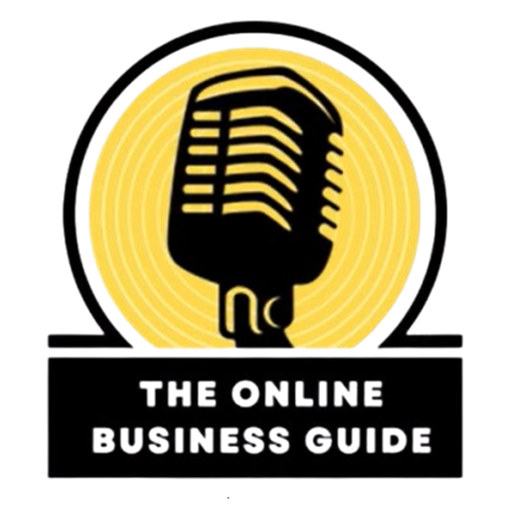From Free to Paid: How to Monetize Free Content Without Losing Your Audience
 You’ve been providing valuable content to your audience for free—whether it’s blog posts, videos, social media insights, or podcasts—and you’ve built a loyal following. But now, you’re ready to take the next step: monetizing that content.
You’ve been providing valuable content to your audience for free—whether it’s blog posts, videos, social media insights, or podcasts—and you’ve built a loyal following. But now, you’re ready to take the next step: monetizing that content.
The challenge is this – How do you turn free content into a paid product without alienating your existing audience?
Monetizing free content can be tricky, but when done right, it can create a sustainable income stream without compromising the trust and goodwill you’ve built with your audience.
Here’s how you can make that transition from free to paid while keeping your audience on board.
- Understand Your Audience’s Pain Points
Before you even think about putting up a paywall, you need to make sure you understand your audience’s needs. Why do they follow you? What problems are they trying to solve by consuming your content?
For example, if you run a fitness blog that offers free workout tips and routines, your readers might be looking for more structure or a personalized workout plan. Your audience will be willing to pay if you can offer something they find extremely valuable and relevant.
Tip: Engage with your audience regularly through surveys, direct messages, or community groups. By listening to their feedback, you can fine-tune your paid content offering to meet their specific needs.
- Create a Distinction Between Free and Paid Content
You don’t want your audience to feel like they’re suddenly being deprived of the free content they’ve come to rely on. It’s important to maintain a healthy balance between what remains free and what is part of your paid offerings.
One effective way to differentiate is by offering advanced or exclusive content behind a paywall. Your free content can serve as an introduction or a teaser to your more in-depth, premium material.
Example: Let’s say you run a marketing podcast. You could continue offering your regular podcast episodes for free but introduce a paid membership where subscribers get access to deep-dive interviews, case studies, or exclusive content such as webinars or AMAs (Ask Me Anything sessions). By clearly showing the additional value in the paid version, you’re giving your audience an incentive to upgrade without losing the essence of your free offering.
- Gradual Transition: Introduce a Freemium Model
Instead of an abrupt shift from free to paid content, consider using a freemium model. This approach allows your audience to access a basic level of content for free while offering premium, paid options for those who want more.
For example, if you’re a writer offering free e-books or articles, you could start offering a subscription for exclusive, in-depth e-books or whitepapers. This gradual transition eases your audience into the idea of paying for your content while still providing value at no cost.
Tip: Ensure the free content remains valuable in itself. You want your audience to feel like they’re still getting something worthwhile without paying. The freemium model should not feel like a downgrade but a natural step towards more advanced or specialized content.
- Offer Tiered Pricing
One of the best ways to cater to a wide range of your audience is by offering tiered pricing plans. Some people may not be ready to pay a premium fee, but a lower-priced option could entice them. A tiered pricing strategy gives your audience the flexibility to choose a level of access they’re comfortable with, thus widening your potential customer base.
Example: If you’re offering an online course, you could have a basic package that provides access to course videos, a mid-level package with video plus downloadable worksheets, and a premium package that includes one-on-one coaching sessions. This way, you’re catering to different financial capacities and offering multiple entry points to your paid content.
- Build Trust Through Transparency
One of the biggest fears for any content creator transitioning from free to paid is the potential backlash from their audience. However, being transparent about your reasoning can go a long way in retaining your audience’s trust.
Tip: Be upfront with your audience about why you’re introducing paid content. Whether it’s to cover production costs, improve the quality of your offerings, or create a more sustainable business model, your followers will appreciate your honesty. Share your vision for how the paid content will enhance their experience rather than simply asking for money.
You can explain it in a blog post, a video, or even an email newsletter. The key is to communicate how the shift will benefit both you and your audience.
- Deliver on Your Promise
Once people start paying for your content, it’s crucial to deliver the value you’ve promised. There’s nothing worse than paying for premium content only to discover it’s not much better than the free version.
The content behind the paywall should not only meet your audience’s expectations but exceed them. This is where you need to over-deliver in terms of quality, depth, or access. If you’re offering a paid membership or course, provide more personalized attention, deeper insights, or exclusive tools that free users won’t get.
Example: Imagine you run a photography website offering tutorials. Your free content might cover general photography tips, but in your paid membership, you could offer advanced tutorials, live critique sessions, and access to a private community where members can get feedback on their work. This type of added value can make your paid offerings irresistible.
- Use Limited-Time Offers and Bonuses
One effective strategy to entice your audience into converting from free users to paid subscribers is to offer limited-time discounts or exclusive bonuses. This can create a sense of urgency and get those on the fence to take action.
Example: Let’s say you’re launching a paid course. You could offer early-bird pricing for the first 100 sign-ups or include a bonus e-book for anyone who subscribes within the first week. This approach taps into the “Fear of Missing Out” (FOMO) while rewarding those who take quick action.
- Monetize Through Sponsorships or Partnerships
If you’re still hesitant about charging your audience directly, another option is to monetize your free content through sponsorships or partnerships. Many brands are eager to reach engaged audiences and will pay to have their products or services featured within your content.
This can be a win-win situation—you get to keep your content free for your audience while earning revenue through brand collaborations. Just make sure any sponsored content aligns with your audience’s interests and maintains the integrity of your brand.
Tip: Be selective about your partnerships. If your audience feels like you’re pushing irrelevant products just to make a buck, you could lose credibility. Stick with brands that you genuinely believe in and that offer value to your audience.
- Cultivate a Community
One of the most powerful ways to turn free users into paying customers is by building a sense of community around your content. When people feel like they’re part of a group or movement, they’re more likely to invest in exclusive perks that bring them closer to that community.
This is where paid memberships can really shine. Offer exclusive access to a private forum, live events, or Q&A sessions that foster connection and engagement among your audience.
Example: Think of online communities like Patreon, where creators offer various membership levels, each providing access to different tiers of content. Your audience will pay not just for the content but for the sense of belonging and direct interaction with you.
- Build a Recurring Revenue Stream
Instead of focusing on one-off purchases, aim for recurring revenue through subscription models. Offering a monthly or yearly subscription can create a steady income stream while providing ongoing value to your audience.
Tip: To maintain subscriber retention, continuously add value to your paid offerings. Regularly update your content, provide exclusive bonuses, and keep your audience engaged with fresh material.
You Can Monetize Without Losing Your Audience
Transitioning from free to paid content can feel daunting, but with the right approach, you can monetize your content without alienating your audience. By understanding their needs, offering genuine value, being transparent, and providing flexible options, you can make the transition smooth and successful.
Remember, your audience is more likely to pay for content if they see the additional value and feel like they’re part of something special.
So, make the shift gradually, deliver on your promises, and continue nurturing the relationship you’ve built.
Your content can not only remain free for those who need it but also become a sustainable revenue stream for those who want to invest in more.

























